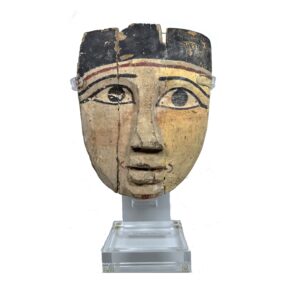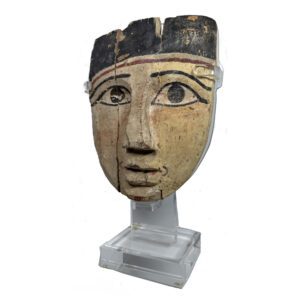Wood Sarcophagus Relief Mask, Egypt, Ptolemaic Period (1986)
Original price was: $2,600.00.$2,200.00Current price is: $2,200.00.on Stand – H: 17.5″ W: 9.875″ D: 5″ | CALL 213-568-3030 OR EMAIL [email protected] FOR SHIPPING.
Painted masks adorned the of sarcophagus of mummified individuals, serving a protective and spiritual function in Egyptian burial rites. Crafted with beautiful stylized features, it dates from the Ptolemaic Period (305-30 BCE).


